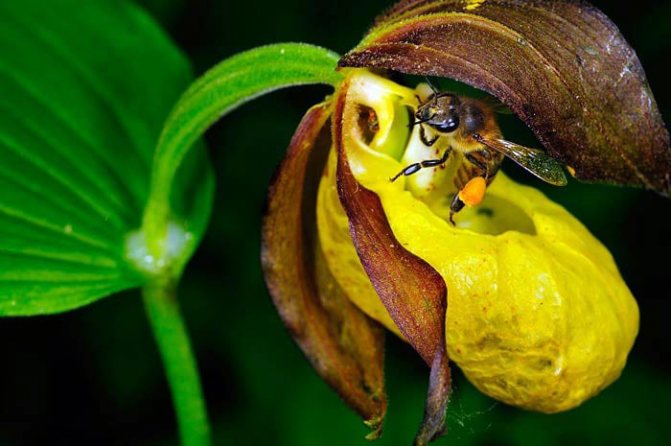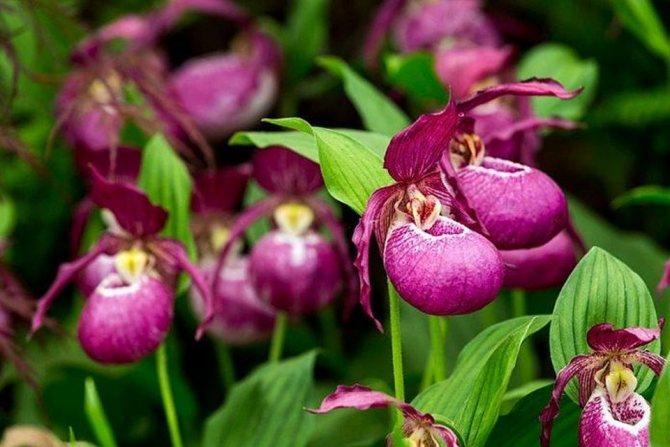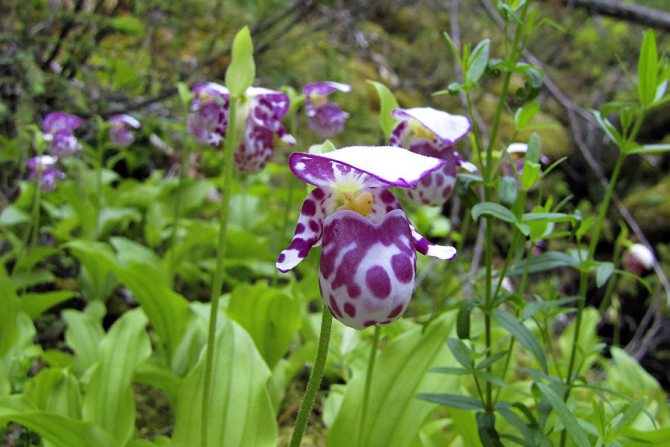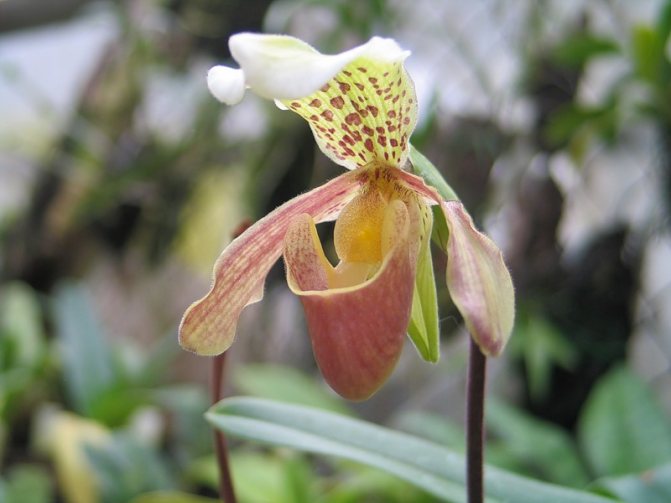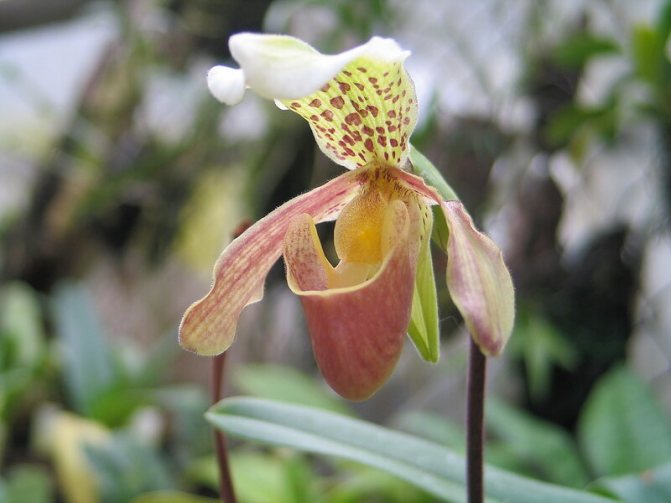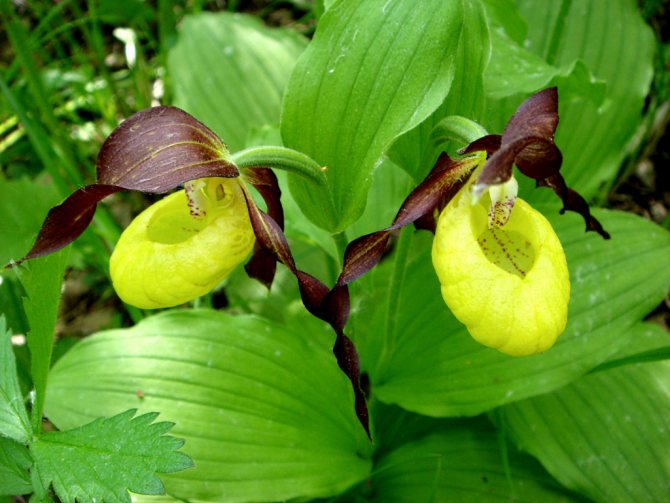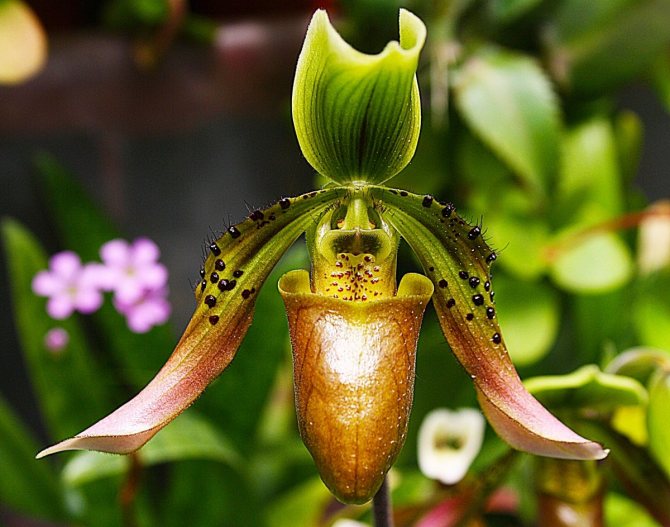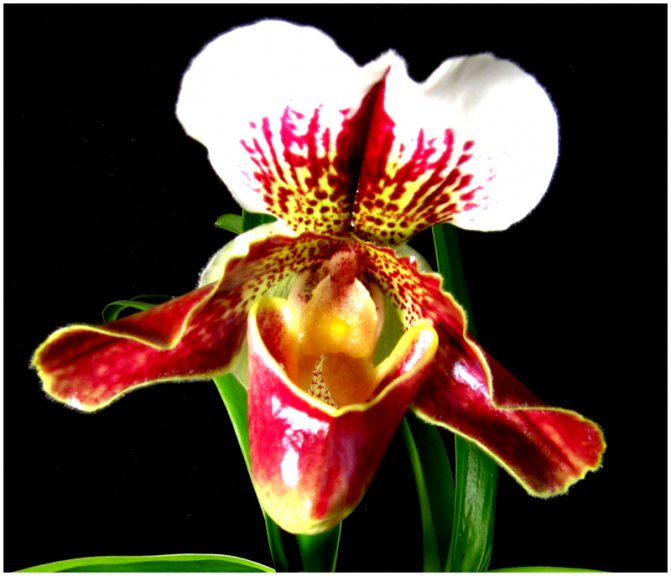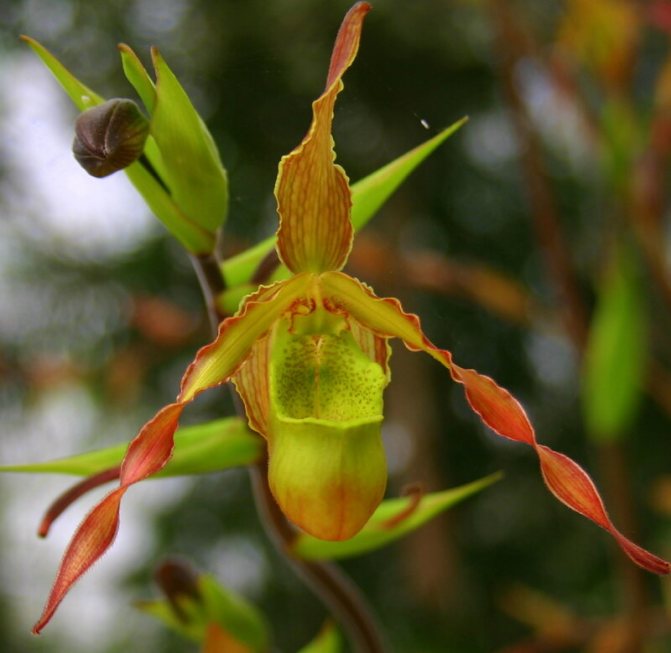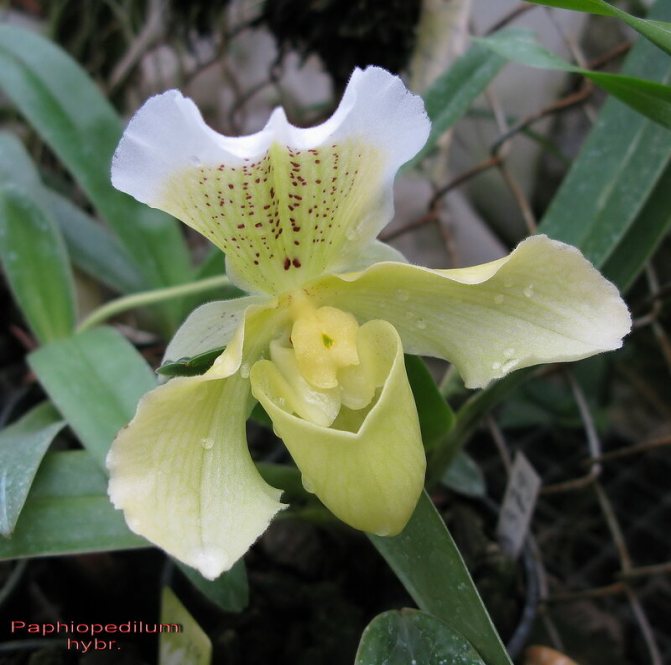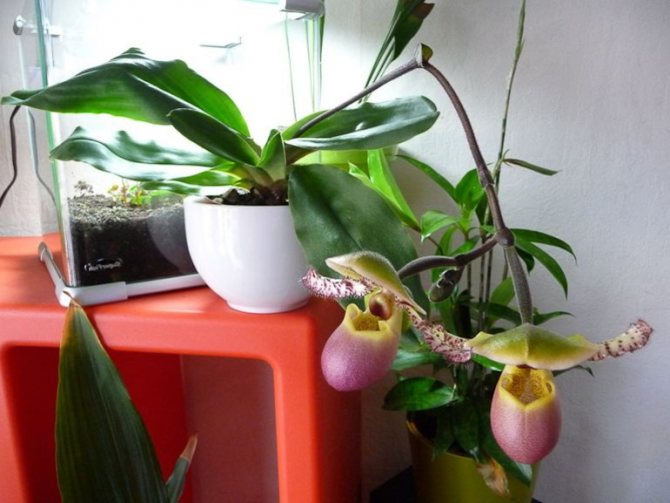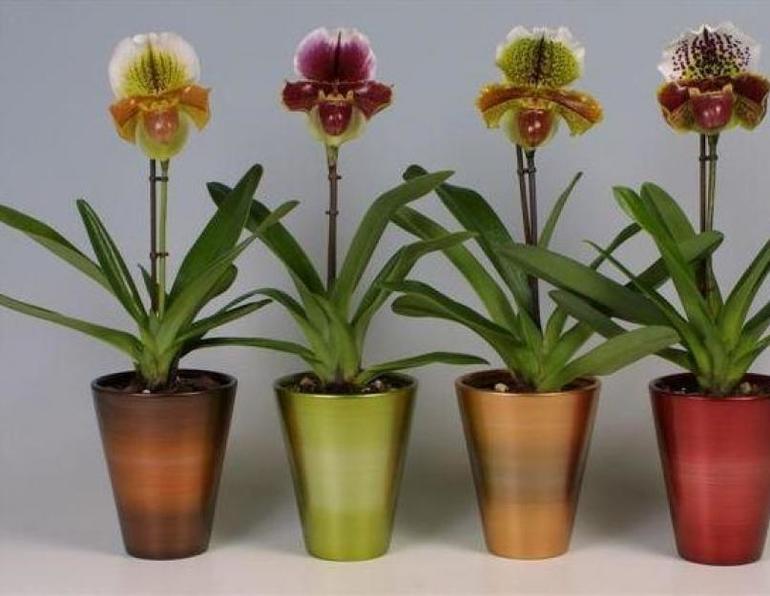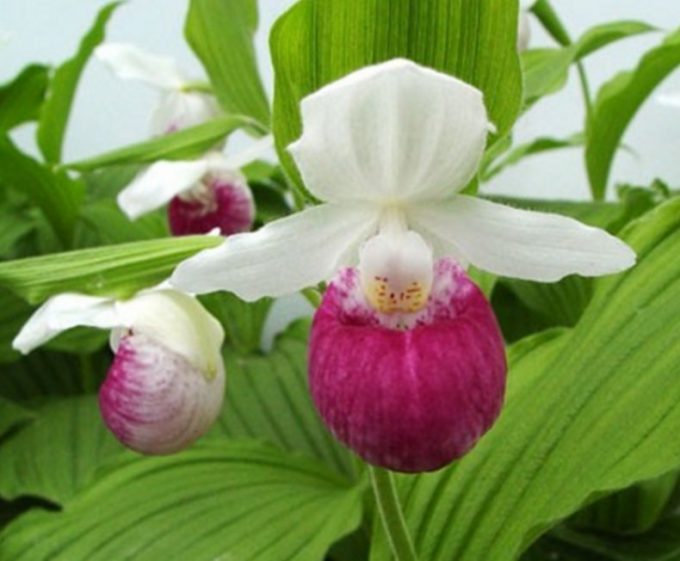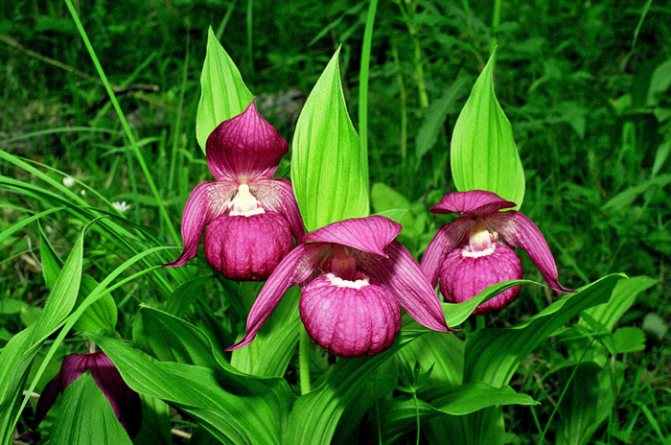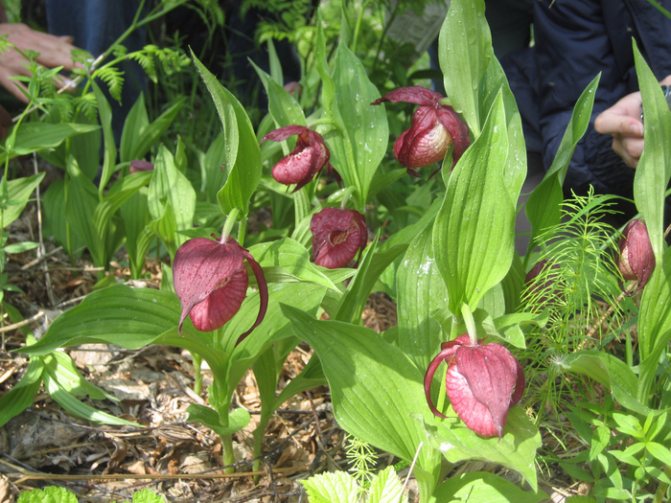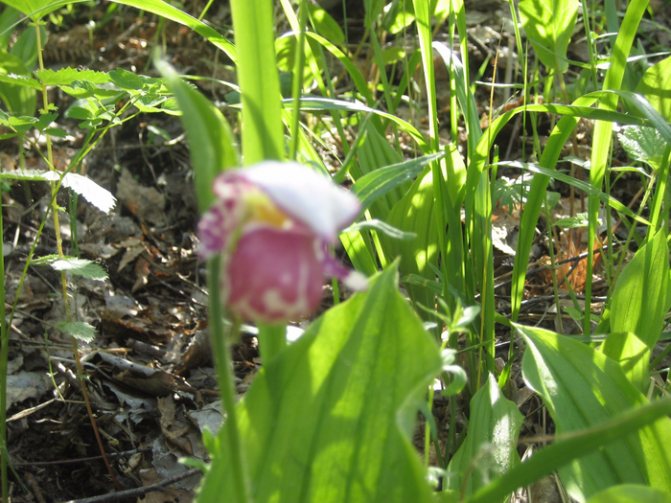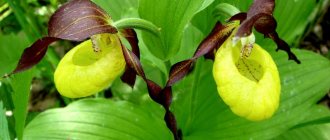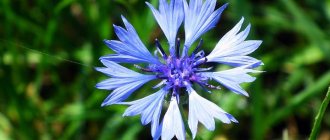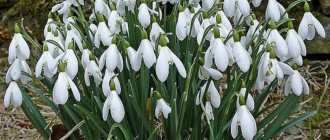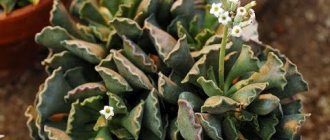The lady's slipper is a real plant that belongs to the Orchid family, that is, it is an orchid that has a herbaceous appearance and an unusual peduncle. It has the following description: the length of its leaves reaches 30 centimeters, and the length of the peduncle released from the leaf rosettes reaches forty centimeters, and it is large-flowered. Most often, the leaves are colored green and dark green, but sometimes there are plants with a grayish marble color. Peduncles can be different, depending on the species, only one flower can be located on it, and it can also be multi-flowered. There are more than fifty species.
Origin and name
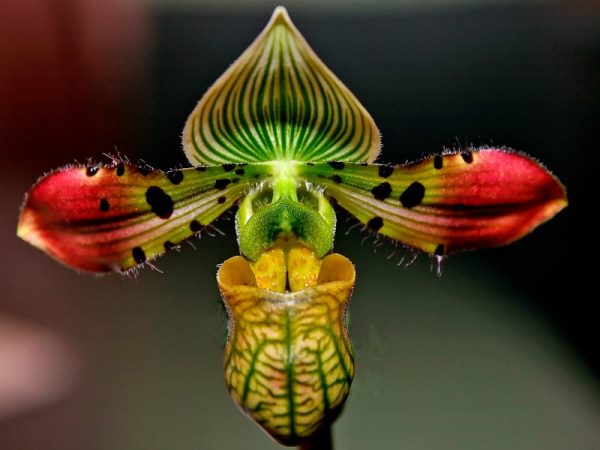
Orchid name "Venerin's slipper" is rooted in a very romantic legend. In ancient Greek mythology, there is the legend of the goddess of love Venus, who, walking through the fields and forests, dropped her shoe from her foot. The traveler saw the shoe, picked it up and held it out to the goddess. But at that moment the shoe turned into a plant with a very unusual appearance.
Another beautiful legend tells that during the hunt Venus and Adonis got caught in the rain. They took refuge in a cave, where they indulged in amorous pleasures, and a slipper, which was made of pure gold, slipped off the goddess's foot. A local shepherd found a shoe, but as soon as his hand touched it, he took the form of an exquisite flower in the form of a shoe.
People have long appreciated the beauty of the orchid, so they tried to decorate their home with this flower. There are different names of the plant: "Kukushkin's boots", "Petushki", "Adam's head" and others.
Appearance
The lady's shoe flower looks very original. The shape of the flower is somewhat remotely reminiscent of a slipper with ribbons. In this regard, there are a huge number of legends explaining its origin.
Here is one of the legends explaining the name of the plant. The goddess Venus, wandering in the northern forests, decided to rest and took off her shoes to give her legs a rest too. And they were forgotten in the forest. Subsequently, they turned into beautiful flowers, which are now called Venus's slippers.
There is another legend similar to the previous one.:
- It tells about the fact that the goddess Venus and her lover, while on the hunt, were caught in a strong thunderstorm.
- They had to seek shelter in one of the caves. The goddess threw off her wet shoes in front of the cave.
- A casual traveler noticed the shoes and wanted to pick them up, but they immediately turned into flowers. The wanderer did not touch the flowers, he decided that the gods lived in the cave.
Such legends attract children as they love various fairy tales and legends. The information received helps them to draw pictures of this flower in more detail.
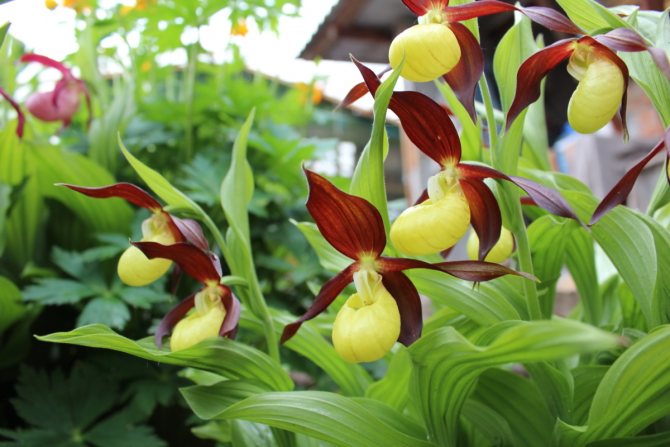

Photo and description


The perennial "Lady's slipper" belongs to the orchid family... You can meet this unusual flower in the European part of Russia. It is widespread in the Crimea, southern Siberia, northern China and Mongolia, Europe, and is also especially revered in Japan.
The root system of the flower is thick and short, but with many small roots on the main root. Stems can grow up to 60 centimeters, more often they are of medium length (20–35 centimeters). The number of leaves ranges from 2 to 10.They are wide in the form of an ellipse with pointed ends of yellow-green color, stretching from the base to the inflorescence itself. The edges of the leaves are even and smooth.
However, it is not only the unusual shape of the flower that attracts, but also a delicate sweetish pleasant aroma. The color of the petals of an orchid can be bright yellow or lemon, and the perianth is brown-red.
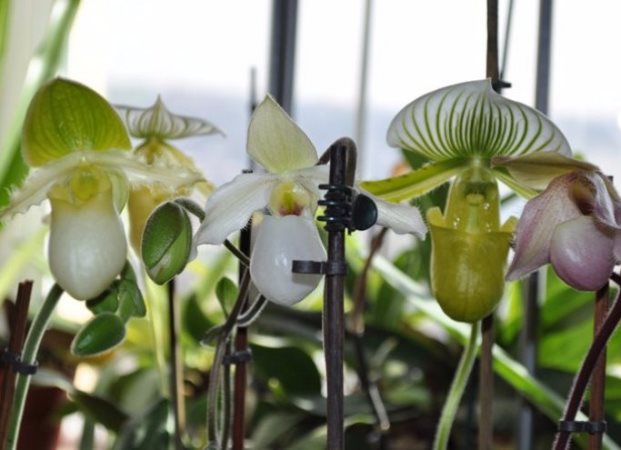

Bloom begins in July - this is the most wonderful time when you can see all the beauty of a flower. Pollination occurs with the help of bees, hoverflies and insects. The flower consists of 3 petals and 3 sepals. Using an outlandish plant shape, spiders love to set traps for their victims here.
reference: Indoor orchids bloom for over 2 months and green leaves remain green all year round. The first flowering of an orchid at home occurs at the age of one and a half to two years.
The age of a flower is easy to determine by the number of leaves, there should be at least five of them. To speed up flowering, the "stress" method is sometimes used. For example, you can create a difference between day and night temperatures of 4-8 degrees.
Varieties of the orchid "Lady's slipper"
The slipper or its botanical name "Pafiopedilum" has various artificially bred varieties. The papiopedilum species is divided into 4 genera, each with several dozen subspecies.
Lady's slipper, real or ordinary
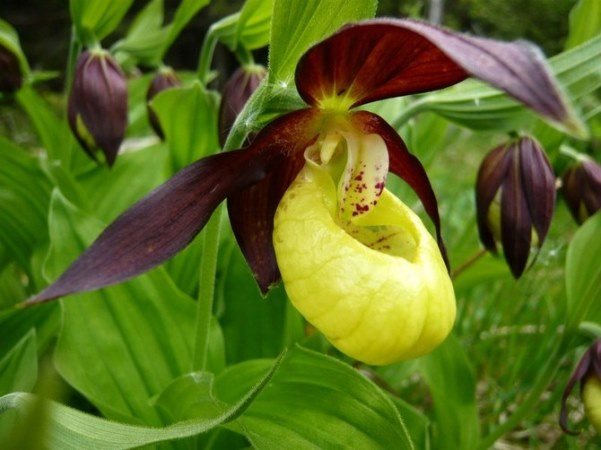

This is a rare perennial plant that is listed in the Red Book.... It is found in deciduous or mixed forests, where there is a lot of moisture. Propagated by vegetatively separated shoots. Seed propagation is difficult due to the peculiarities of the size of the seeds: they are so small that they disperse like dust before reaching the soil. The stem height ranges from 15 to 40 centimeters. During the flowering period, 1-3 large bright yellow flowers appear at the top.
Acaulescent
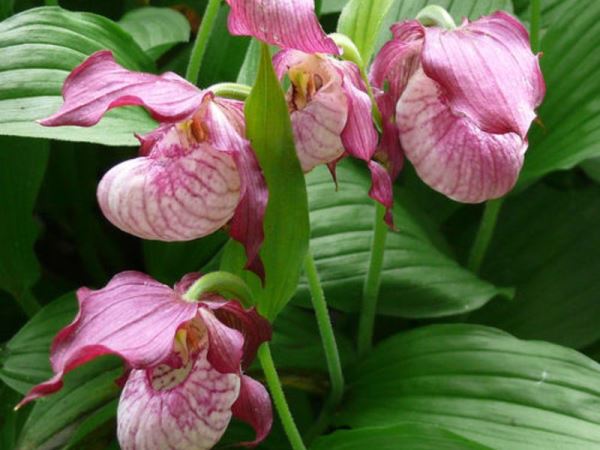

It has two tubular leaves and one large flower with a pleasant aroma on one stem. The flowering period lasts from late spring to mid-summer.
California lady's slipper
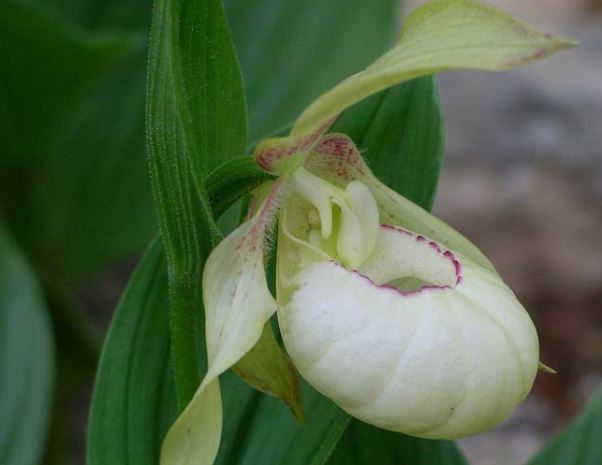

The giant among all varieties of papiopedilum. The stem height reaches 80 centimeters. On a massive stem 3-4 leaves of an oblong shape are placed. One inflorescence can contain from 4 to 12 small flowers.
Large-flowered
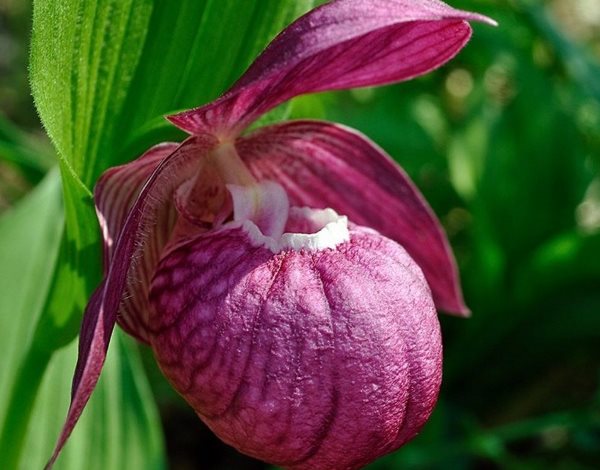

This orchid species has only one flower pod with a pouting purple veined lip. The flowering period is mid-summer.
Lady's slipper cypripedium guttatum or speckled
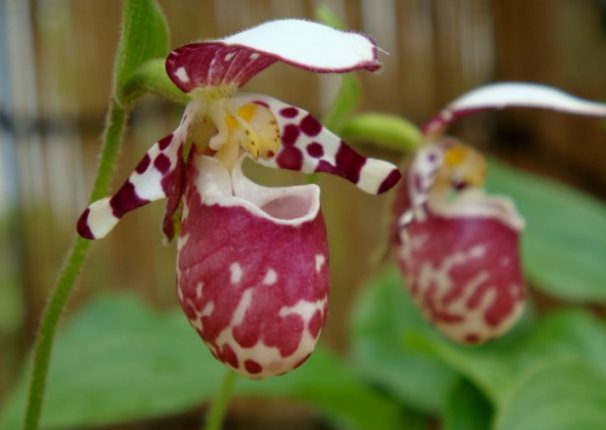

It is found in the European part in the middle latitudes, in Siberia and the Far East. The stem height is no more than 30 centimeters. It begins to bloom in May - June... This species is well acclimatized in any soils and is able to decorate not only a greenhouse, but also an alpine slide, a garden of stones in garden landscape design. The flowers have an unusual color - spotted purple.
Ramhead
Named so for the shape of small single flowers on a thin stem.
Snow white
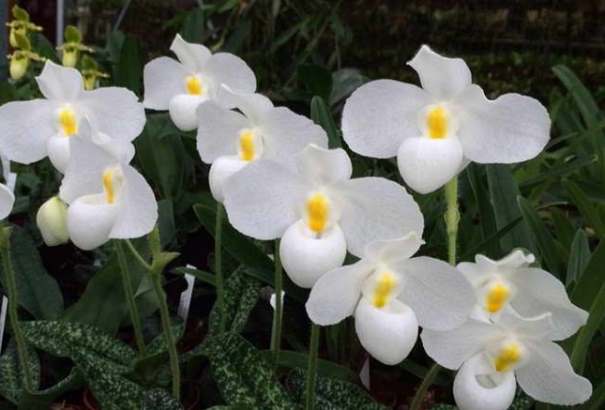

A rare variety with 2-3 elongated white flowers, and with a stem height of no more than 15-20 centimeters. Has a unique aroma.
Knotty
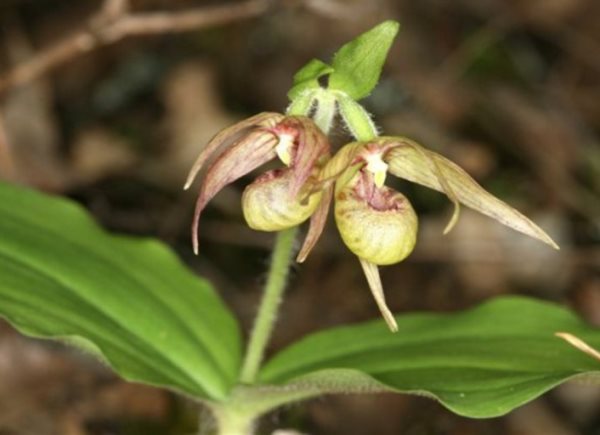

The stem of this type of shoe reaches 40 centimeters, and at the end there are 4-7 inflorescences.
Pafiopedilum concolor
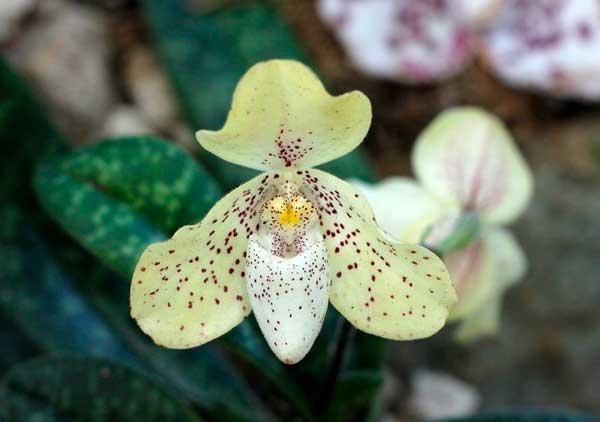

The wild plant is found in Asian countries: Thailand, North Vietnam, China. It grows on the banks of rivers, loves high temperature and humidity.
Paphiopedilum micrantum small-flowered
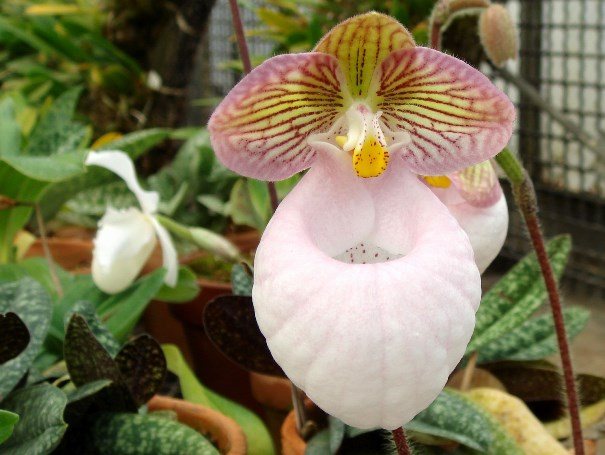

A single flower with an incredibly large velvet lip. It is the most recognizable of the orchid family. The homeland of this plant is the humid mountain forests of southern China.
Paphiopedilum niveum
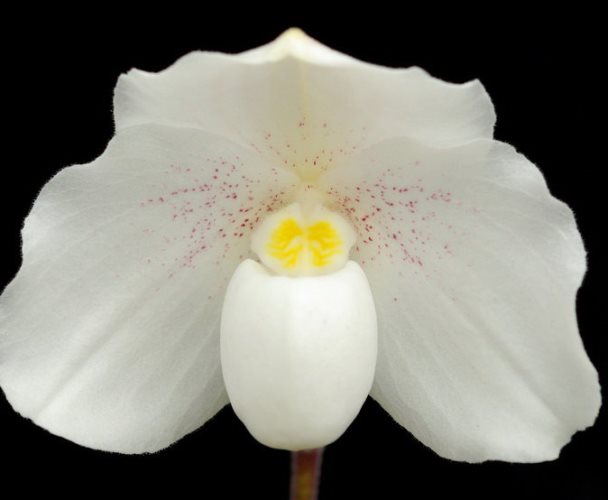

It grows in Malaysia and southern Thailand. It has large white inflorescences with variegated green leaves.
The adorable varieties of the divine plant
It is incredibly difficult to imagine the planet Earth without a variety of colors. Life would be dull and not interesting if there weren't cute orchids around. Therefore, new varieties of the divine flower appear. Here is some of them.
Lady's slipper is real
The original plant grows up to half a meter in height. It has a short and strong rhizome, which consists of 2 internodes. It grows adventitious roots about 30 cm long. On the stem of the flower, short hairs of a glandular nature are visible. Elliptical leaf plates, alternate. They are slightly pointed and hairy at the edges. They grow up to 18 cm in length.
This lady's slipper is distinguished by its original buds. Perianth leaves are colored red or brown, which is harmoniously combined with a yellowish swollen lip.
Stemless type of shoe
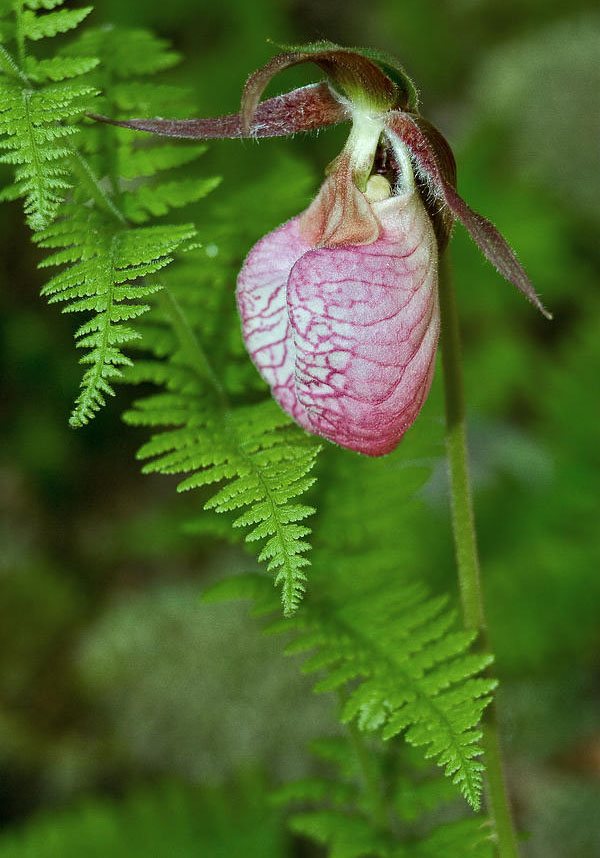

This species is distinguished by terrestrial shoots with two oblong leaves about 20 cm in length. The bud is located on a stalk 35 cm high. Usually it is large in size and has a pleasant aroma. It blooms in spring or early June.
California lady's slipper
The flower grows up to 80 cm in height. On a strong stem there are 4 leaves 10 cm long. They are oval in shape, with sharp tips. The buds are composed of several small flowers. In general, they look very funny.
Large-flowered species
The variety is characterized by a short thick rhizome, on which filamentous winding roots grow. Brown shoes are located at the base of the 45 cm stem. The leaves are usually 15 cm long and about 8 cm wide. The lady's slipper has an intricate coloring due to different shades of purple.
Planting and care at home
This exquisite flower is less finicky than violets, begonias or fuchsias. With proper care, it pleases with long flowering.
Watch the video for caring for this type of orchid at home
Tips for growing and caring for a shoe at home
Paphiopedilum grows well in pots on the windowsill if several prerequisites are met:
- Preference should be given to slightly cool, well-ventilated areas with ample sunlight.... The temperature regime should not exceed 20 degrees. In the warm season, the room where the orchid grows must be periodically ventilated. The humidity indicator can be in the range of 50–70%. Watering should be done as the soil dries, but not overdry.
- A lady's slipper in a greenhouse and at home blooms in winter, therefore, after flowering, watering should be moderate, and moistening should be done with a sprayer in the smallest drops mode. The lifespan of the plant and flowering depends on competent watering. The orchid does not tolerate waterlogging... In summer, the flower is watered twice a week, in winter - once; between waterings, the soil should remain completely dry.
- Orchid feeds are selected depending on the stage of growth. Fertilizers needs to be applied only through watering... After transplanting, it is not recommended to feed the flower for a month. During the "rest" period, after flowering and during flowering, the plant is not fertilized.
- Reproduction of pafiopedilum is carried out during transplantation... The plant is divided into several parts with roots and shoots. Young orchids are planted in clay pots with a diameter of at least 10 centimeters. A drainage made of polystyrene, expanded clay, crushed stone is placed at the bottom of the container, pouring a little soil. Then the roots are placed, and the top is filled with a substrate. The planting pot is placed on a windowsill away from direct sunlight. After 2 weeks, the plant can be sprayed.
- Orchid transplantation into fresh soil should be carried out no more often than every 2-4 years... When changing the soil, the process of "getting used" to the composition of the substrate takes place. To make this period less painful, it is necessary to leave some of the old soil in the pot.The planting pot should be 5-8 centimeters larger in diameter than the previous one. The best time to change the soil is the dormant period of the flower culture, after flowering... It is not necessary to water the plant during transplantation, since there are enough trace elements and moisture in the new soil composition.
Note! The life expectancy and splendor of the flowering of papiopedilum depend on the quality of the soil and trace elements in it.
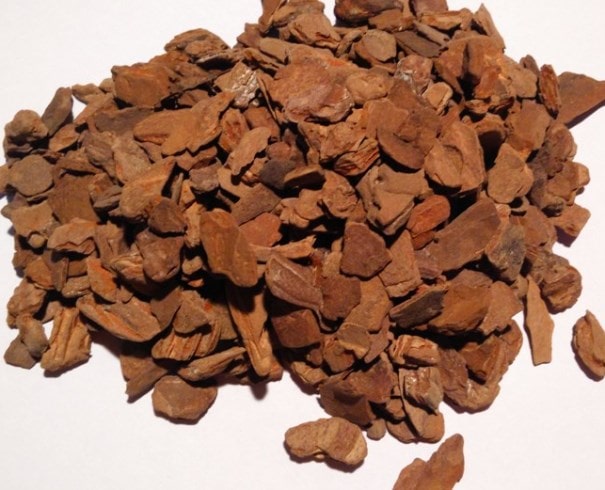

Special balanced substrates are available from flower shops. They must be nutritious and permeable to moisture and air. During the peduncle period, the container with the flower should not be carried and moved, every movement for a light-sensitive plant causes stress.
In order for flowering to last as long as possible, during the swelling of the buds, it is necessary to double the number of waterings. During the flowering period, the room temperature should be increased by 6-7 degrees.
Important! Orchids are very sensitive to light: with a lack of lighting, papiopedilum may not bloom at all, and the leaves will begin to turn yellow and wither. But the flower pot should not be placed in direct sunlight, as burn spots may form on the leaves, and the leaves will turn yellow. The light should be diffused. Pafiopedilum should not be placed next to the radiator.
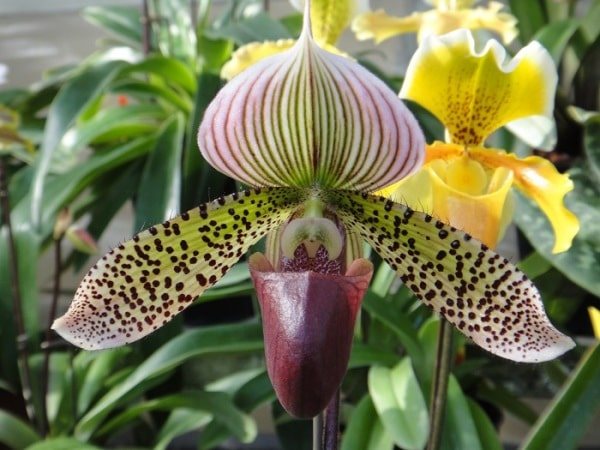

When placing the pot on the north side, the flower will feel a lack of light, and additional lighting with phytolamps will be required. The most optimal choice of place is the eastern and western sides: the flower will bathe in the gentle rays of the rising or setting sun.
Protection from pests and diseases
The immune system of papiopedilum is quite resistant to diseases and pests. But from over-watering or contaminated potting soil, harmful microbes can form.
For the prevention of diseases, before planting, the pots are disinfected, and the plant is treated with a biofungicidal agent phytosporin... At the first signs of the appearance of brown spot on the leaves, the damaged parts are removed from the stem. The container with the flower is transferred to a dry, ventilated room.
Papiopedilum pests: what they look like
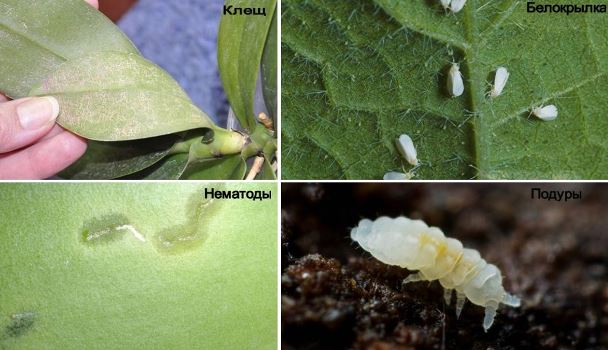

The most dangerous for the flower culture are:
- aphid;
- ticks;
- slugs;
- snails;
- thrips.
Small insects are located on the perianth and stem of the plant. In the fight against them, spraying with a solution of karbofos helps.
Paphiopedilum in the wild
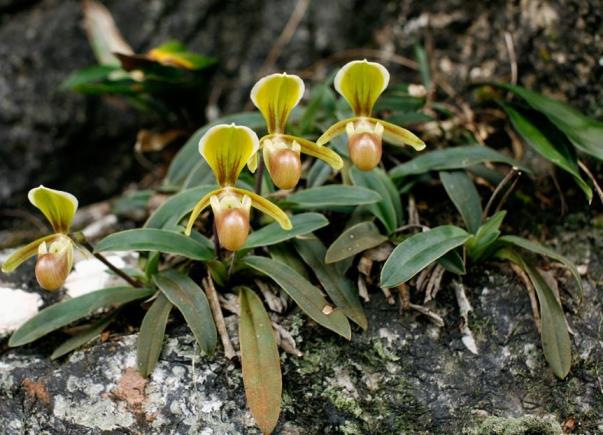

In nature, the lady's slipper orchid prefers moderate lighting and neutral soils with sufficient moisture... Occurs in highlands, plains, forest meadows and forest edges.
In one place the orchid "Lady's slipper" can grow without transplants for about 100 years, this is a record among flowers.
The collection of orchids is prohibited throughout Russia, the wild plant is listed in the Red Book, and it is also protected in all European states.
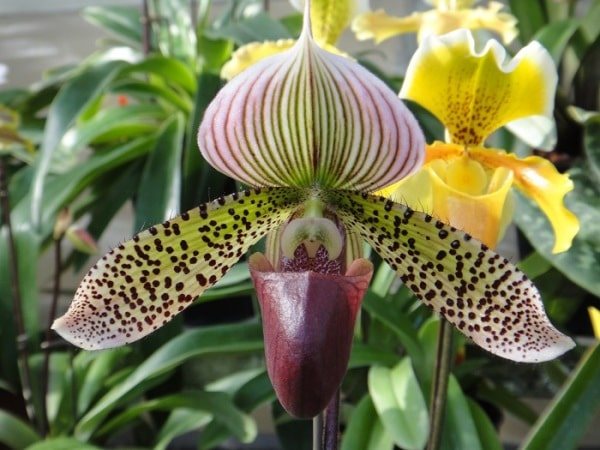

The type of flower culture "Lady's slipper" has perfectly adapted to winters with little snow and temperature fluctuations up to minus 30 degrees. Deforestation - natural habitats - causes great damage to orchids in nature.
Flower growers, amateurs and professionals have long appreciated pafiopedilum. Many types of orchids feel great in apartments, greenhouses, conservatories... Proper competent care of a plant is one of the conditions under which it will delight its owners with flowering for many years.
How to draw a flower with a pencil step by step
Next, start drawing each petal. Pay attention to their shape and the fact that these flowers usually have 6 petals. Move on to drawing the stamens. Here's how you should get it: Next, we move on to the image of the Lily in more detail. Let's add spots on the petals.
Next stage. Erase the auxiliary lines that we made in the initial stage and outline the contours of the Lily.Next: Well, at the end: Try to go through this lesson yourself, you can even take another flower (for example). You still have questions, how beautiful to draw a flower
? Leave your comments about this and show your work. We have another similar lesson about how. And also recommend the beautiful one! I also recommend trying your hand, you can draw.
Lady's slipper - forest orchid
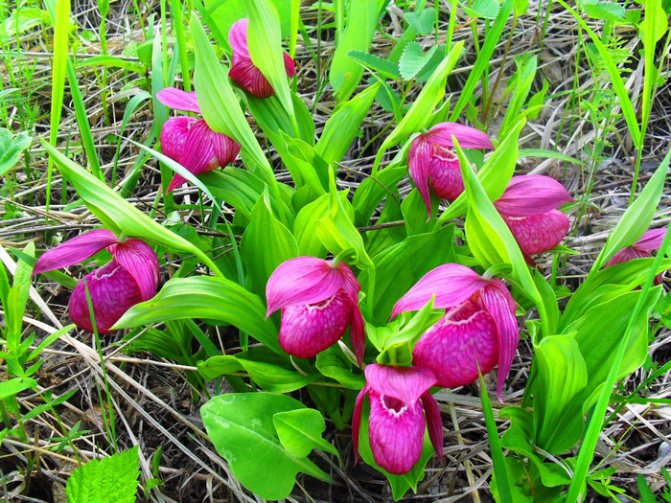

The lady's slipper is a beautiful herb, the most exotic of the orchid family. With a long stem and wide leaves, it is surprisingly unlike any common orchid species. In the photo, the lady's slipper has long petals, and an inflorescence in the form of a shoe in the middle, where it accumulates poisonous juice.
The genus slipper got its name from the shape of the lip, reminiscent of a woman's slipper. In most European languages, as well as in Latin, this genus is called the lady's shoe, Venus's shoe, ladies' shoe, etc. to the tropics.
Plants with dense pubescent stem and large leaves. The stem is either very short, and then with a single pair of leaves, which seem to be near-ground, and a single-flowered peduncle, or rather tall, with large alternate leaves and usually with several, more often with 1-3, less often with 6-12 flowers.
The flowers are quite large, of a peculiar shape, b. including brightly colored, usually with vanilla aroma. Bracts are also large, leaf-shaped. Sepals are petal; upper ovoid or elliptical; 2 lateral ones often fuse into one bisected at the end, facing downward.
Slipper flowers, with their complex structure, are a typical example of trap flowers. Once inside the flower, pollinators - usually flying insects - can only come out in a certain way, ensuring pollination. The insect is attracted by the bright color of the flower. It sits on the smooth edge of the lip, slides over it and rolls into its cavity. After fruitless attempts to climb up the smooth, concave surface, the insect notices light coming from two imaginary holes in the side walls at the base of the lip. Moving to the source of light, the insect must crawl the stigma of the flower, on which the pollen brought by it will remain, and only then it will be able to notice the real exit. Before leaving the flower, it will rub against the anther and sticky pollen grains not united in polynia will stick to its body. Having fallen on another flower, the insect first touches the low-inclined stigma and fertilizes the flower, and only then the anther will sprinkle it with a new portion of pollen.
How everything is thought out by Mother Nature!


